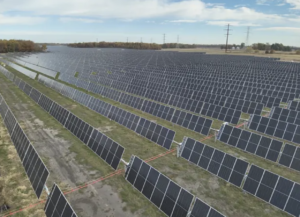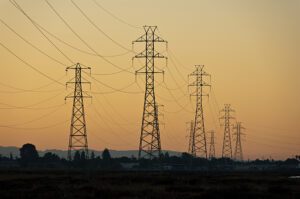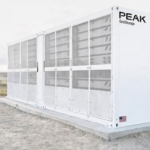Securing a reliable supply of electricity requires plenty of research to balance the risks and rewards of striking a deal.
Securing a reliable supply of power is paramount for many businesses, particularly as more groups look to source their own energy rather than relying on the local electric utility. Negotiating favorable rates and terms for that power can involve many steps, with the process dependent on the buyer’s energy needs, whether the electricity comes from thermal or renewable resources (or both), and market conditions, among other things.
Energy industry experts who spoke with POWER detailed several tasks businesses must execute in today’s increasingly complex legal and regulatory landscape (Figure 1). An enterprise may need to negotiate a power purchase agreement (PPA), buying power from one or more sites for a contracted period. A group could be looking to build their own generation station, or buy existing assets or an operating (or even dormant) power plant. A contract also could involve the purchase of fuel, such as natural gas or hydrogen, or fuel cells, or battery energy storage.
 |
|
1. Complex contract negotiations require multiple steps. Seeking mutually beneficial solutions builds stronger, more sustainable partnerships. Source: Envato Elements |
The experts agreed that defining the objectives of securing energy is a first step. That could be deciding whether the group wants a fixed rate or a variable rate, and, of course, the length of a contract. It could include a decision about the use of thermal energy (coal, natural gas, or nuclear) or renewable energy (solar, wind, hydro, and energy storage). Does the business want to own the generation assets, or simply purchase the power?
“My view has always been that the most important factor when structuring a contract is to create good alignment between the parties involved,” said Jim Summers, CEO of GPC Infrastructure LLC, a group that provides data centers with a long-term alternative to a utility grid interconnection. “Focusing on win-win solutions changes the approach and tone of the negotiations and positions both organizations to act collaboratively when challenges inevitably arise in the years—and in some cases decades—that lie ahead.”
“The contract is your key tool for mitigating risk and minimizing the potential for disputes during the construction of a power project, and therefore the most important thing to keep in mind when negotiating contracts is the importance of clarity and specificity of language,” said Laura Fraher, partner at law firm Barclay Damon. “Thus, it is generally preferable to address and resolve any potential ambiguities during the contract negotiation, including by discussing how the contract language would apply to concrete hypothetical scenarios that are likely to occur, rather than to accept potentially ambiguous language and rely on your ability to persuade a fact finder that your interpretation of that language is correct if a dispute arises later.”
Rohit Ogra, co-founder and Chief Revenue Officer of Texas-headquartered Treaty Oak Clean Energy, said, “From our perspective as a generator, utilities prioritize reliability, cost-effectiveness, and confidence in execution. Delivering commercially sound terms and leveraging your financial strength to provide stability is key. Legally, the most important consideration is how risk is allocated. That includes risks related to permitting, procurement, and pricing. The ability to translate regulatory uncertainty into contract structures that fairly distribute risk is a key differentiator.”
Developing Deals
Building and executing a contract, particularly a PPA, requires plenty of research. Those who spoke with POWER agreed that a business must assess its energy needs, which could involve a review of historical energy usage—a load profile—to help an energy supplier determine the best way to move forward at a specific site or sites. Market research also is important, and an end-user should understand pricing, current trends, and any possible regulatory and/or supply chain issues that could impact energy reliability (Figure 2).
 |
|
2. Supply chain disruptions can cause unexpected project delays. Contract negotiations should establish clear responsibility for managing these risks. Source: Envato Elements |
Businesses must be ready to issue a request for proposals, or RFP, to enable a comparison of different costs based on supplier and fuel type. The power suppliers also should be evaluated to ensure their viability.
Negotiating the terms of a contract, and finalizing the agreement, is not the end of the process. Energy users should continually monitor their electricity consumption, and keep abreast of market trends, to determine whether the contract is effective, and whether adjustments are needed prior to any renewal.
Said Summers, “Key to this is being flexible and developing a deep understanding of what is most important to both sides. A good example of this is appreciating the need for a higher level of reliability when selling power directly to a data center versus a public utility. Generators need to understand the customer’s expected load profile, backup systems, and response time requirements in order to create the right solution through a combination of technical, commercial, and contractual mechanisms. This might involve designing with redundancy, such as extra equipment, a redundant fuel supply, or using batteries. It could also be handled commercially, such as by procuring power from the grid to cover any shortfalls in generation.
“Another crucial factor in effectively managing project timelines and price uncertainty is the development of conditions precedent that must be met before work can begin. These can include securing the necessary permits, obtaining regulatory approvals, or expanding a gas pipeline for fuel supply,” said Summers.
Hans Dyke, partner in the Washington, D.C., office of Bracewell and former in-house counsel for Sol Systems, told POWER: “PPAs generally take two forms, each enabling the financing and construction of the project. A traditional PPA is a contract used to structure the commercial agreement between buyer and seller for the physical delivery of electricity to a delivery point. A virtual PPA [or a contract for difference, known as a CfD, on the price of electricity] is effectively a financial instrument providing a hedge against electricity price volatility by locking in a long-term fixed price while delivering the environmental attributes of a renewable energy project to the buyer—most often a large corporation with publicly stated sustainability goals.
“Traditional physical power PPAs are pretty straightforward agreements [at least within the industry], providing for the delivery of physical power to a delivery point from seller to buyer,” said Dyke. “The buyer may be a wholesaler, securing long-term, stable power for their retail customers. Alternatively, the buyer may be larger corporate/industrial users requiring power for their operations [such as steel plants, data centers, and other heavy load operations]. With physical PPAs, the buyer must be able to receive physical electricity delivered to a delivery point.”
Dyke also noted virtual PPAs or CfDs “do not require a buyer to receive electrons. The virtual PPA is essentially a financial hedge that was created to enable the growth and financing of renewable energy projects. It has been critical to the renewable power industry. While the underlying power plant [such as a solar or wind project] is producing physical electricity and the electricity is delivered and sold into the grid, the transaction between buyer and seller is primarily structured to deliver the project’s attendant environmental attributes [such as renewable energy credits, or RECs] to the buyer. Buyer and seller settle the difference between the agreed PPA price and the wholesale market price where the project sells its electricity. The virtual PPA serves as a hedge against electricity price volatility and as an environmental attribute procurement tool.”
A Co-Op Perspective
Christian Nagel, director of Power Supply at Texas-based Rayburn Electric Cooperative, said his work includes overseeing “Rayburn’s power supply strategy, generation planning, and load forecasting efforts. That includes negotiating contracts that support those functions, such as PPAs, asset acquisitions, and EPC [engineering, procurement, and construction] agreements that reflect our long-term risk posture and operational goals. I also work closely with our executive leadership and board of directors to ensure alignment with internal risk and planning policies.”
Nagel said his group “has broad experience negotiating PPAs with varying structures. We’ve also executed large asset purchase agreements, equity purchase agreements, full-requirements contracts [where a single supplier provides all of a utility’s power], and partial-requirements contracts [where a single supplier provides a significant portion of the overall load].
“There are several legal, regulatory, and commercial factors that must be carefully considered when negotiating contracts,” said Nagel. “These contracts often span many years and involve complex operational, financial, and compliance risks, so thoughtful structuring is essential from the outset, and overall risk management is the key objective. On the legal and regulatory side, utilities must ensure that all contractual terms align with environmental regulations and broader ESG [environmental, social, and governance] commitments. Reliability and performance standards should be clearly defined, and force majeure protections must account for real-world disruptions that could impact delivery or construction timelines. Contracts should also address liquidated damages and include well-drafted indemnity clauses to clarify responsibility in the event of disputes or unforeseen costs.
“From a commercial standpoint, evaluating the creditworthiness of counterparties is critical, along with building financial structures that reflect market realities. Pricing mechanisms should be flexible enough to respond to market dynamics while still providing long-term certainty,” said Nagel. “Contracts should also clearly outline product specifications and performance benchmarks, include appropriate termination provisions, and define rights related to assignment and subcontracting. Maintenance requirements and operational covenants should also be spelled out to ensure alignment over the life of the agreement.
“One recent example is our work on the EPC contract for RES II, a major expansion of the Rayburn Energy Station that will add 570 MW of natural gas–powered generation capacity to help meet accelerating demand across our service territory,” said Nagel. “RES II will enhance local reliability and provide additional dispatchable resources to support long-term growth for our members. During the negotiation process, we incorporated strong performance protections and built in flexibility to account for market conditions and supply chain lead times. This approach allowed us to manage risk while maintaining both cost and schedule certainty. The experience reinforced the importance of close coordination across legal, commercial, and technical teams.”
Construction Agreements and Contract Structures
Building a new power generation project has its own set of issues (Figure 3), which should be addressed in the contract between the utility and the builder. Fraher said these can involve different structures depending on factors such as the size of the project.
 |
|
3. From small installations to major facilities, contracts establish the framework for on-time, on-budget delivery of quality work. Source: Envato Elements |
“As it relates to construction, the contract model most typically employed for large power projects is the EPC contract. This contract model essentially establishes a ‘one-stop shop’ for the owner entity, with a single EPC contractor fully responsible for the complete scope of engineering [design of the entire power plant], procurement [purchase, installation, and performance of all equipment], and construction of the entire project. Traditionally, most EPC contracts are lump sum contracts,” said Fraher.
“An alternative delivery model we are seeing more of lately, particularly in the context of very large, complex projects, is the engineering, procurement, and construction manager [EPCM] model,” said Fraher. “In this scenario, the owner entity enters into an EPCM contract with a construction manager, who typically is fully responsible for the complete scope of engineering, but rather than performing the procurement and construction phases, instead acts as construction manager for those phases while the owner entity separately contracts with construction contractor[s] and/or supplier[s] for procurement and construction.”
Fraher added, “An alternative pricing model we are seeing more of lately in the EPC context is the guaranteed maximum price [GMP] model in place of the lump sum EPC contract. This is a cost-reimbursable, not-to-exceed model and typically includes an open-book process with required supporting documentation. For the ongoing physical needs of the plant after construction is complete, operation and maintenance [O&M] or long-term services agreements [LTSAs] are typically used.”
Tanya Bodell, a partner at StoneTurn Group LLP, noted five types or structures for contracts in the power generation space: PPAs, CfDs, tolling agreements, generation asset lease agreements, and shareholder agreements. “From the perspective of economics, business, and policy, I view contracts as allocating economic risks and rewards through contractual language of obligations and liabilities,” said Bodell. “PPAs and other contracts extend well beyond the purchase and sale of electrical energy and power.” Bodell said formalizing contractual obligations usually include descriptions of:
- ■ Purchase/Sale Commitments. Obligations around quantity and price, along with technical specifications regarding delivery.
- ■ Property Rights. Which party has priority rights to other property rights (such as excess power and environmental attributes).
- ■ Performance Guarantees. Obligations imposed on each party to ensure performance under the contract (such as performance validation, audit rights, credit requirements, parental guarantees, and escrow accounts).
- ■ Liability and Enforcement. Avenues available to the parties in the event of failure of the other to meet the requirements in the contract, usually in the form of penalties, payments, liquidated damages, and mediation processes/legal venue rules.
- ■ Standard Contract Terms. Other typical contract determinants such as start-date/end-date, term, extensions, and termination.
“For renewable [energy] projects, tax credits simply provided a separate revenue stream that could be financed through tax equity financing. In the absence of tax credits, the challenge is how to find a way to replace that revenue stream and the financing associated with that revenue stream,” said Bodell. “In order to replace the lost financeable value in the absence of tax credits, renewable generators will either need to increase revenues through higher prices, decrease costs, or find other revenue sources (such as augmented state subsidies).”
Bodell added, “PPAs worked hand-in-hand with tax credits. Both are financeable and fund the upfront capital costs. Generators tend to prefer long-term PPAs as they generally are readily financeable through project financing and long-term payments mitigate the risks of recovering upfront capital investment and other fixed costs. However, they will not serve as a replacement for tax credits unless the market will cover those lost benefits. Creative financing, new ways of extracting value, and potentially new business models will be required to offset the lost tax credits.”
Bodell also said, “Long-term PPAs are a blessing and a curse. The blessing is that they can allow for easy financing with higher leverage through project financing. The curse is that the industry is volatile, and long-term contracts can diverge dramatically from market conditions. For example, Quebec has a long-term power purchase agreement from the 1970s for which it is still paying only $1.50/MWh versus current market prices of $35 to $50/MWh over the past few years. When contract prices are that far apart, litigation happens.”
Said Ogra, “Protecting against liability starts with thoughtful risk allocation. Generators face risks such as permitting delays, procurement challenges, and price volatility. Contracts need to provide flexibility and include off-ramps for circumstances beyond your control. Some risks can’t be adequately hedged through traditional market instruments or strategies. In those cases, it’s important to ensure risks are shared in a way that’s rational and equitable.”
Ogra added, “PPAs have always played a central role in project financing. Investors rely on them to secure predictable, high-quality cash flows, and buyers rely on them to secure a predictable price for energy and access to other attributes, like RECs. As the market evolves with growing demand, more renewable energy, and ongoing regulatory uncertainty, PPAs will become even more critical. In a post-tax credit environment, we expect power prices to adjust, which will likely lead to higher PPA pricing to make up for the lost value of incentives.”
—Darrell Proctor is a senior editor for POWER.










